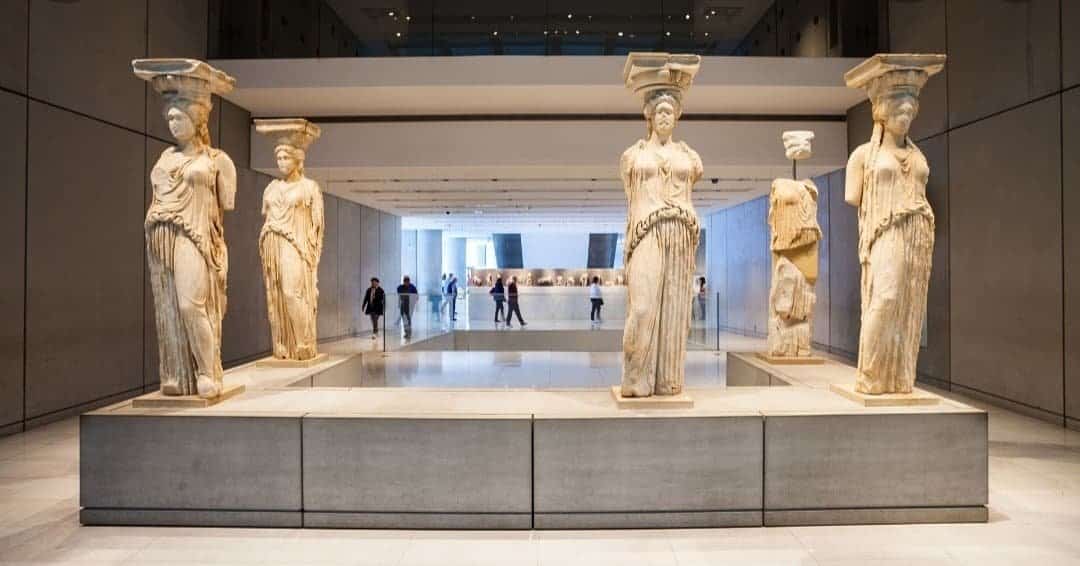High atop the Athenian Acropolis, bathed in the golden hues of dawn, stands the Erechtheion, a marble masterpiece whispering tales of gods and heroes. But amongst its intricate carvings and storied facades lie six figures that captivate hearts and ignite intrigue – the Caryatids.
The first definition of the Caryatids was given to us by the Roman architect Vitruvius (1st century BC). They would represent the inhabitants of Carya (now Karyes), a town in the Peloponnese, who would have allied themselves with the Persians in a war against their compatriots.
Erected as silent guardians, they bear the roof's weight, their stoic gazes fixed on the city below.
More than just architectural marvels, the Caryatids carry the weight of ancient Athens' beliefs within them. Chosen for their devotion, not their strength, they became living sacrifices, forever tethered to the Erechtheion, the tomb of King Kekrops lying beneath their silent watch.
But their story is not without controversy. One sister, snatched away in 1801 by Lord Elgin, now resides across the sea, a gaping wound in the heart of the Erechtheion. Yet, the remaining five stand defiant, their unwavering presence a testament to the city's enduring spirit.
Beyond their iconic silhouettes, the Caryatids are witnesses to millennia of history. The intricate friezes adorning the temple walls narrate tales of gods and mortals, battles and celebrations, a tapestry woven in stone and light. The past and present intertwine, the spirit of Athens beating at the heart of these silent sentinels.
The Caryatids stand as a living reminder of the sacrifices made. The triumphs celebrated, and a city's resilience that has weathered storms and emerged stronger. They are a testament to the power of storytelling, etched in stone, urging us to listen to the whispers of the past and honour the legacy of those who came before.
The Caryatids were moved from the Erechtheion to the Acropolis Museum for conservation purposes in 1979.


Caryatid is a sculpted female figure serving as architectural support in the place of a column or a pillar. Its purpose in architecture is mainly decorative. The most famous Caryatids are the ones of Erechtheion on Acropolis Hill, Athens.
Caryatids were used in gates, facades, cornices, friezes, roofs, etc.
The most famous Caryatids are the Caryatids of Erechtheion. The six sisters were "born" when their home, Erechtheion, was built on the Acropolis. The Caryatids proudly support the roof, gazing at the Parthenon with an ethereal look. All six of them look very similar, but on closer inspection, one will notice that each one is unique.


